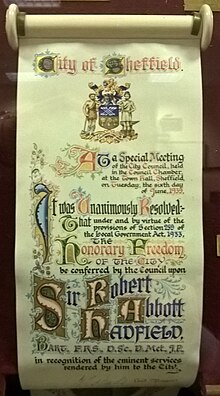
Back Freedom of the City German Urba honorigo Esperanto Libertad de la ciudad Spanish کلید شهر Persian יקיר העיר HE Freedom of the City ID Freedom of the City SIMPLE



The Freedom of the City (or Borough in some parts of the UK) is an honour bestowed by a municipality upon a valued member of the community, or upon a visiting celebrity or dignitary. Arising from the medieval practice of granting respected citizens freedom from serfdom, the tradition still lives on in countries such as the United States, United Kingdom, Ireland, Australia, Canada, South Africa and New Zealand—although today the title of "freeman" confers no special privileges. The Freedom of the City can also be granted by municipal authorities to military units which have earned the city's trust; in this context, it is sometimes called the Freedom of Entry. This allows them the freedom to parade through the city, and is an affirmation of the bond between the regiment and the citizenry.
The honour was sometimes accompanied by a "freedom box", a small gold box inscribed to record the occasion; these are not usual today. In some countries, such as the United States, esteemed residents and visitors may instead be presented with the Key to the City, a similarly symbolic honour. Other US cities award Honorary Citizenship with just a certificate.